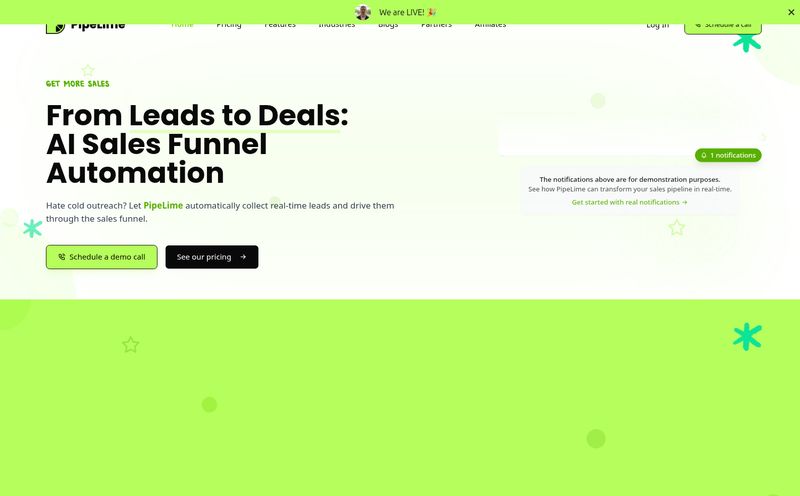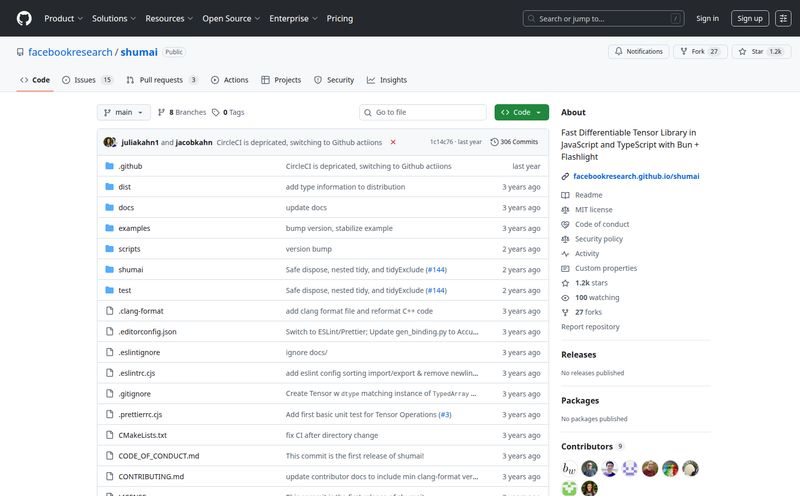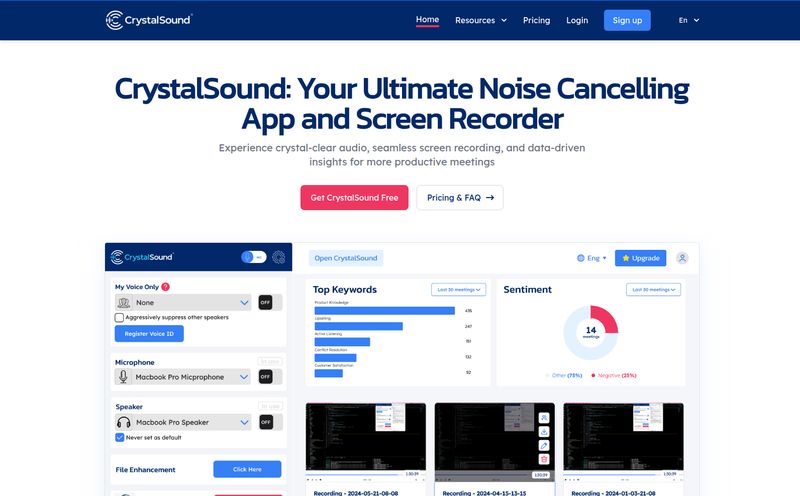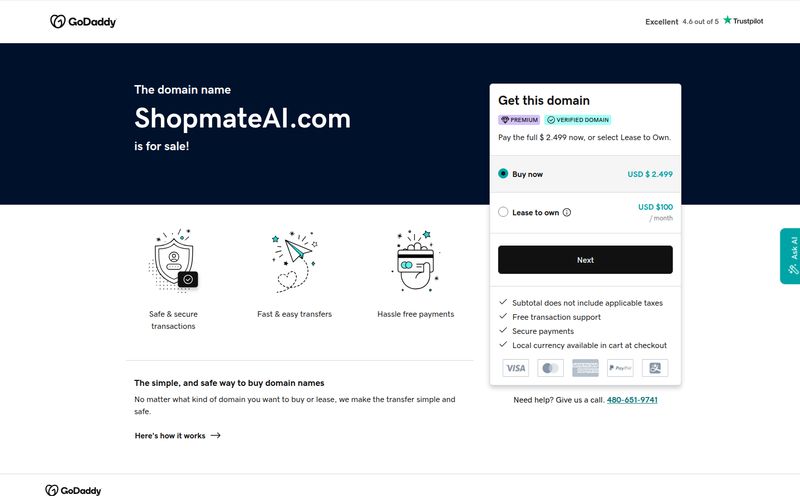If you're in B2B sales or marketing, how much of your week is spent on… grunt work? I'm talking about the endless data spelunking, the cross-referencing of LinkedIn profiles, the desperate search for a non-generic opening line that won't get your email instantly deleted. It's a grind. We’ve all been there, staring at a target account list, feeling like we're about to climb a mountain with a teaspoon.
For years, we’ve been promised an AI savior. A tool that doesn’t just give us more data, but the right data, at the right time. A true co-pilot. I've seen a lot of tools come and go, most of them just glorified data scrapers. But every now and then, something pops up on my radar that makes me lean in a little closer. Today, that something is called Tome.
And interestingly, the story of Tome might begin with the ghost of a startup called Lightfield. More on that little mystery later.

Visit Tome
So What Is Tome, Anyway?
Forget the generic “AI-powered platform” jargon for a minute. The best way I can describe Tome is as a second brain for your entire sales team. Imagine an assistant that has already read all your company’s playbooks, studied your CRM history, and then gone out and scoured the internet for everything there is to know about your target accounts. That's the core idea here.
It's an AI assistant designed specifically for the art of high-value B2B sales. Its main job is to automate the ridiculously time-consuming process of account research. Instead of you spending hours piecing together information, Tome pulls from web data and your own internal sources (like your CRM) to build a complete, 360-degree picture of an account. The goal? To help you prioritize who to talk to, craft outreach that actually gets a reply, and walk into meetings feeling like you've worked there for years.
The Core Features That Make Tome Tick
Alright, let's get into the nuts and bolts. A tool is only as good as what it can actually do. And Tome has some seriously compelling features that go beyond a simple dashboard.
AI-Powered Account Research on Autopilot
This is the headline act. The manual process of digging through news articles, press releases, financial reports, and social media to understand a company's current situation is, frankly, soul-crushing. Tome automates this. It acts like a tireless research analyst, constantly monitoring your target accounts and surfacing the important stuff. This isn't just about saving time; it's about getting a strategic edge that your competitors, who are still doing it the old-fashioned way, probably won't have.
Identifying Strategic Initiatives
Here’s where it gets really interesting. Good sales isn't about pitching features, it's about solving problems. Tome's AI is trained to identify a company's major strategic initiatives. Are they expanding into Europe? Investing heavily in cybersecurity? Undergoing a massive supply chain overhaul? Knowing this lets you frame your outreach not as a cold pitch, but as a timely, relevant solution to a major priority. It changes the entire conversation.
Mapping the Key Decision-Makers
You’ve found the perfect account with a burning need for your product. Great. Now, who do you talk to? Sending your brilliant proposal to the wrong person is like putting a love letter in the wrong mailbox. Tome helps you map out the org chart and identify the key players and decision-makers related to those strategic initiatives it found. It connects the “what” with the “who,” which is a crucial step so many sales pros have to guess at.
Automated Meeting Briefings
If you're an Account Executive juggling multiple high-stakes meetings a week, this is a lifesaver. Tome can automatically generate pre-meeting briefings, summarizing everything you need to know: the company's latest news, the key players you're meeting with, their strategic priorities, and potential talking points. It’s like having a chief of staff for every call.
The Good, The Bad, and The AI
No tool is perfect, right? As an SEO and traffic guy, I'm naturally skeptical of anything that promises the world. Here's my honest take on the upsides and the potential bumps in the road with a tool like Tome.
The Upside: Why I'm Genuinely Excited
The biggest pro here is the sheer efficiency. We're talking about giving back hours upon hours to your sales team every single week. That's time they can spend actually selling, building relationships and closing deals, not being amateur detectives. The ability to craft deeply personalized outreach at scale is the holy grail of modern sales, and Tome seems to bring that within reach. I’ve always felt that the line between a good sales team and a great one is the quality of their prep work. This tool basically automates that prep work.
The Reality Check: Potential Hurdles
Now for a dose of realism. First off, a tool like this is only as good as the data you feed it. Its effectiveness hinges on a solid integration with your CRM and the quality of your existing data. Garbage in, garbage out, as they say. If your CRM is a mess, you'll need to clean that up first. Second, there's likely a learning curve. This isn't a plug-and-play Chrome extension; it's a powerful system that will require some training to get the most out of it. Finally, and this is a big one for many, the pricing isn't transparent.
What About the Price Tag?
Speaking of which… if you go looking for a pricing page for Tome, you won't find one. This is pretty typical for enterprise-grade B2B SaaS tools. It usually means pricing is customized based on team size, usage, and the specific integrations you need. Don't expect a simple $49/month plan. This is likely a considered purchase that will involve a demo and a custom quote. It's a “you have to ask” situation, which tells you it’s positioned as a premium solution for serious teams.
From Lightfield's Ghost to Tome's Powerhouse
Okay, time to solve that little mystery I mentioned. A while back, a site called Lightfield appeared. It was super minimalist, with a simple “Get early access” button and links to LinkedIn and Twitter. And then... poof. If you try to go to it now, you'll hit a 404 error. A digital ghost.
What happened? My educated guess, after connecting the dots, is that Lightfield was the stealth-mode name for what has now become Tome. This is a classic Silicon Valley move: develop a product under a code name, build a pre-launch hype list, and then launch with a stronger, more descriptive brand name. The minimalist vibe of the old Lightfield page feels very much like the polished, focused product that Tome is today. It’s a fun bit of internet archeology that shows the evolution of a promising product.
Final Thoughts: Is Tome Worth It?
In a world overflowing with AI buzzwords, Tome seems to be one of the few tools that actually gets it. It’s not trying to replace your sales team. It's trying to give them superpowers. It focuses on solving one of the most painful, time-consuming parts of the sales process: strategic account research.
While the lack of public pricing and the need for solid data hygiene are valid considerations, the potential upside is massive. For B2B companies with a high customer lifetime value, investing in a tool that can help you land just one or two more major accounts per year could deliver an insane ROI. It’s a tool built not just for efficiency, but for effectiveness—and in sales, that's what truly matters.
Frequently Asked Questions (FAQ)
- What exactly is Tome AI?
- Tome is an AI sales assistant that automates account research and meeting preparation. It acts like a “second brain” for sales teams by analyzing web and internal data to provide a 360-degree view of target accounts, helping teams prioritize and personalize their outreach.
- Who is Tome best for?
- Tome is primarily designed for B2B sales teams, particularly Account Executives (AEs) and Sales Development Representatives (SDRs) who are focused on high-value, strategic accounts that require significant research and personalized messaging.
- Does Tome integrate with my CRM?
- Yes, integration with your CRM is a core part of how Tome works. Its effectiveness relies on being able to pull from and learn from your internal data to provide the most relevant insights.
- How is Tome different from a standard sales intelligence tool?
- While it has elements of a sales intelligence tool, Tome goes deeper by not just providing data, but by identifying strategic initiatives and mapping decision-makers to those specific priorities. It’s less about data collection and more about strategic application and storytelling.
- What happened to the Lightfield tool?
- Based on our analysis, it appears Lightfield was the original, pre-launch name for the project that has now officially launched as Tome. This is a common practice for tech startups developing a product in a “stealth mode” before a public release.
- Is Tome difficult to use?
- Like any powerful software, there will be a learning curve. It's more than a simple plugin, so teams should expect to invest some time in training to fully leverage all its features for strategic decision-making.



